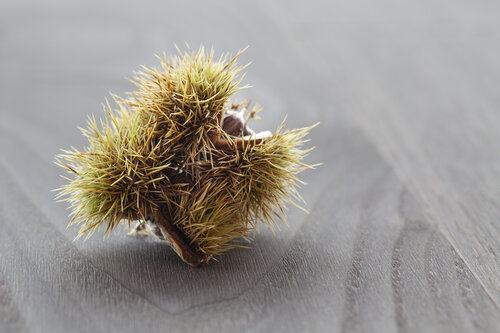Everything made from sweet chestnut
Due to its durable wood, sweet chestnut was already valued by the Romans and Venetians. Until the end of the 19th century, chestnuts, the tree's fruit, served as the main food source for the rural population in mountainous regions of Southern Europe and were known as the "bread of the poor." This elegant wood contains a high level of tannic acid, similar to oak, rendering it antibacterial. It is used for furniture, window-, door frames, barrels and many more. The tree is common in warm European regions and over the past 25 years, its coverage has been increasing again. The sweet chestnut for TRAPA floors originates from the Piemont region.


Wooden symbiosis
All fits together
In nature, “symbiosis“ refers to the coexistence of two different species for mutual benefit. It‘s somewhat similar with TRAPA products: Here, natural wood floors and furniture coordinated in look and feel coexist in symbiosis. Through the presence of the other, each experiences enhancement, comes into its own more effectively and gains additional character. In the in-house TRAPA wood manufactory, experienced solid wood carpenters produce stairs, walls and furniture by hand, which are perfectly matched to the floors in terms of wood type, colour and surface.
